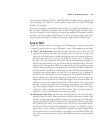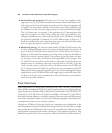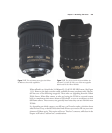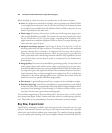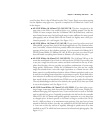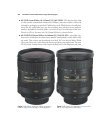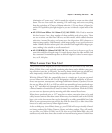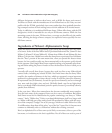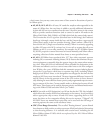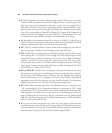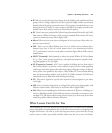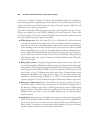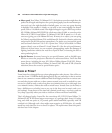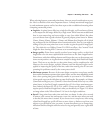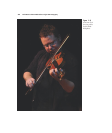a lens’s name, but you may come across some of these terms in discussions of particu-
lar Nikon optics:
■ AF, AF-D, AF-I, AF-S. In all cases, AF stands for autofocus when appended to the
name of a Nikon lens. An extra letter is added to provide additional information.
A plain-old AF lens is an autofocus lens that uses a slot-drive motor in the camera
body to provide autofocus functions (and so cannot be used in AF mode on the
Nikon D40, D40x, D60, D3000, or D5000 which lack the camera body motor).
The D means that it’s a D-type lens (described later in this listing); the I indicates
that focus is through a motor inside the lens; and the S means that a super-special
(Silent Wave) motor in the lens provides focusing. (Don’t confuse a Nikon AF-S
lens with the AF-S [Single-servo autofocus mode].) Nikon is currently upgrading
its older AF lenses with AF-S versions, but it’s not safe to assume that all newer
Nikkors are AF-S, or even offer autofocus. For example, the PC-E Nikkor 24mm
f/3.5D ED perspective control lens must be focused manually, and Nikon offers a
surprising collection of other manual focus lenses to meet specialized needs.
■ AI, AI-S. All Nikkor lenses produced after 1977 have either automatic aperture
indexing (AI) or automatic indexing-shutter (AI-S) features that eliminate the pre-
vious requirement to manually align the aperture ring on the camera when mount-
ing a lens. When AI/AI-S was introduced, Nikon included the designation in the
lens name and offered a service to convert most older lenses to the new configura-
tion. Within a few years, all Nikkors had this automatic aperture indexing feature
(except for G-type lenses, which have no aperture ring at all), including Nikon’s
budget-priced Series E lenses, so the designation was dropped at the time the first
autofocus (AF) lenses were introduced. The most important difference between AI
and AI-S lenses is that the aperture action of the AI-S versions is linear, theoreti-
cally allowing for more efficient shutter priority and programmed exposure meter-
ing on cameras of the time. Current models make no distinction between AI and
AI-S lenses. These lenses can be used for Aperture-priority and Manual mode meter-
ing on the Nikon D7000 and other Nikon “pro” bodies.
■ AI-P. A lens with an AI-P designation is an AI lens that has the CPU chip included,
which allows the transfer of basic lens information to the camera. It was possible to
add an appropriate chip to most AI and AI-S lenses, upgrading them to AI-P
status, but there are few companies offering this service anymore. “Chipped” AI/
AI-S/AI-P lenses are manual focus optics that can be used with the full range of
metering options, the same as with autofocus lenses.
■ CRC (Close Range Correction). The so-called “floating element” system allowed
lens elements to shift position to reduce curvature of field and spherical aberrations
at close-focusing distances. It is available with certain lenses, including the AF
Micro-Nikkor 60mm f/2.8D, which was replaced by the AF-S Micro-Nikkor
60mm f/2.8G ED.
Chapter 11 ■ Working with Lenses 355



